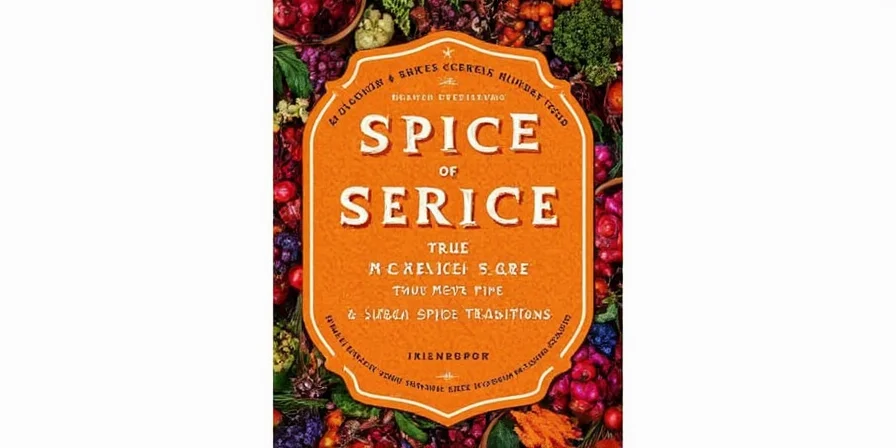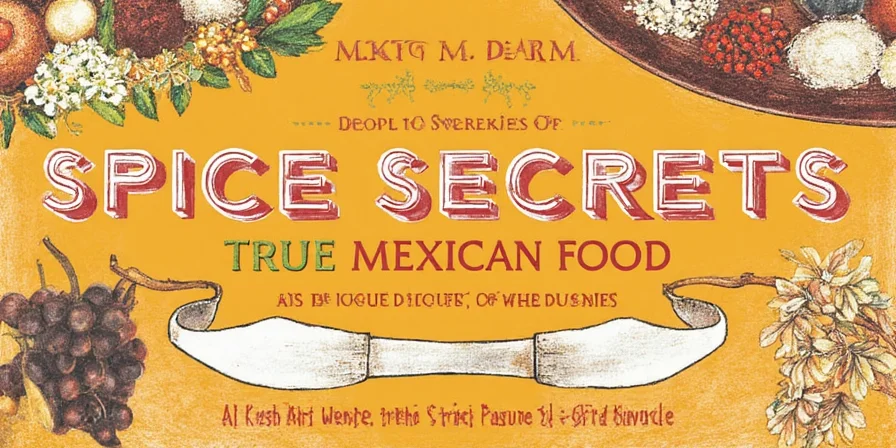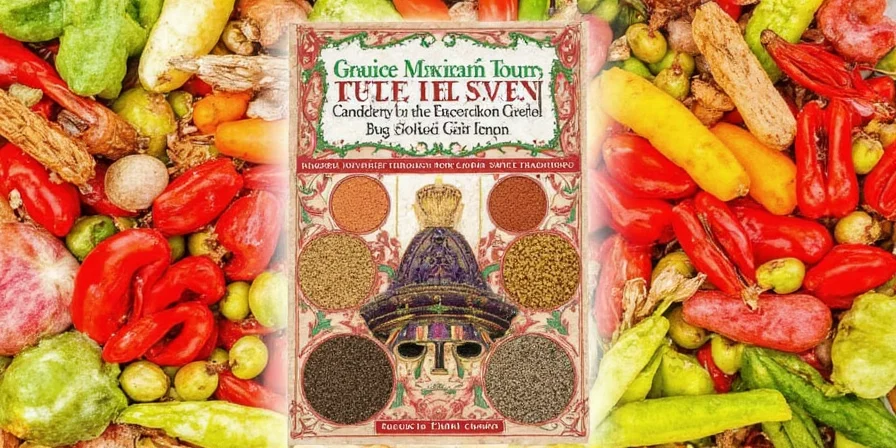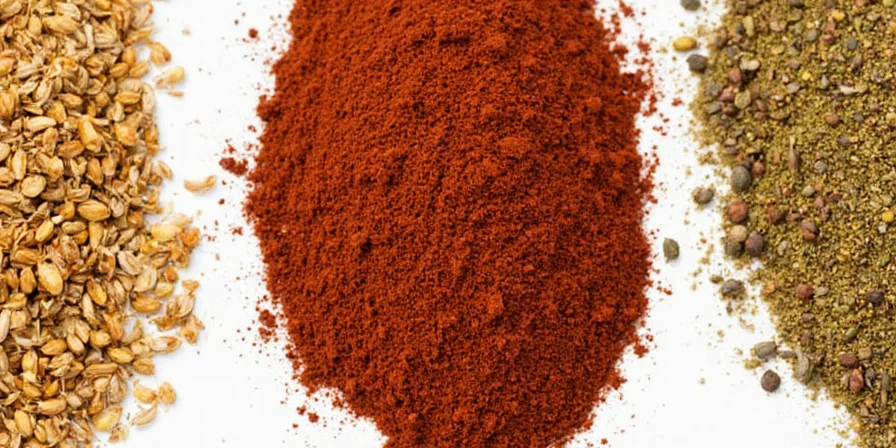Spice Secrets of True Mexican Food: A Flavorful Journey Through Global Spice Traditions
If you've ever bitten into a taco filled with slow-cooked barbacoa and felt like you were tasting a piece of Mexican history, congratulations — you’ve just experienced the magic of true Mexican food. But what really makes it 'true'? Is it the tortilla? The meat? Or is it something far more subtle, more ancient, and infinitely more aromatic?
In this article, we’ll take you on a flavorful tour through the spice-laden soul of traditional Mexican cuisine. From the smoky depths of dried chiles to the earthy warmth of cumin and the citrusy zing of coriander, we’re unlocking the pantry of Mexico’s most authentic kitchens.
Table of Contents
- What Defines True Mexican Food?
- The Spice Cabinet of Authentic Mexican Kitchens
- Top 5 Essential Spices in Traditional Mexican Cuisine
- Spice Like a Pro: Tips for Using Spices in Mexican Cooking
- Regional Spice Variations Across Mexico
- From Mole to Tacos: Signature Dishes That Celebrate Mexican Spices
- Conclusion
What Defines True Mexican Food?
Before we dive into the spices themselves, let's clarify what exactly constitutes true Mexican food. It’s not just any dish served in a taco shell or topped with cheese. Authentic Mexican cuisine is rooted in centuries-old traditions passed down from indigenous civilizations like the Aztecs, Mayans, and Olmecs.
Unlike Tex-Mex or Americanized versions, true Mexican food emphasizes fresh ingredients, complex layering of flavors, and — you guessed it — the thoughtful use of spices. It’s less about heat and more about harmony. And at the heart of that harmony? You'll find the spice cabinet.

The Spice Cabinet of Authentic Mexican Kitchens
The backbone of true Mexican cooking lies in its spices — both single-ingredient seasonings and blended pastes or powders. Unlike many cuisines where salt reigns supreme, Mexican cooks often start with a trio of key elements: chili, garlic, and onion.
But don't be fooled by simplicity; these three can combine with other ingredients to create flavor profiles as rich and layered as a good mole sauce. Let’s explore some of the most iconic spices and spice blends used across Mexico:
The Holy Trinity of Mexican Seasoning
- Dried Chiles: Ancho, Guajillo, Poblano — each brings its own level of heat and flavor complexity.
- Cumin: Often underestimated but essential for depth and warmth in dishes like tacos al pastor.
- Coriander: Fresh coriander leaves (cilantro) are commonly used, but the seeds offer a nutty, citrus-like note when ground.
Top 5 Essential Spices in Traditional Mexican Cuisine
| Spice | Flavor Profile | Common Use | Heat Level |
|---|---|---|---|
| Ancho Chile | Sweet, fruity, raisin-like | Moles, sauces | Low |
| Guajillo Chile | Bright, tangy, berry notes | Salsas, marinades | Moderate |
| Cumin | Earthy, warm, nutty | Tacos al pastor, chorizo | No heat |
| Coriander Seeds | Citrusy, floral, herbal | Soups, stews, salsas | No heat |
| Oregano (Mexican) | Pungent, slightly bitter, resinous | Tamales, bean dishes | No heat |

Spice Like a Pro: Tips for Using Spices in Mexican Cooking
Ready to upgrade your kitchen game from store-bought taco seasoning packets to homemade magic? Here are some pro tips that will make your spices sing like a mariachi band:
1. Toast Before Grinding
Toasting spices like cumin or coriander seeds in a dry skillet brings out their natural oils and intensifies their flavor. Just don’t walk away — they can go from fragrant to burnt in seconds!
2. Rehydrate Those Chiles
Soak dried chiles in hot water or broth before using them in sauces or moles. This softens them and allows you to blend them into a smooth paste.
3. Balance Heat and Sweetness
Many Mexican recipes pair chile heat with sweetness — think of the balance between ancho chiles and chocolate in mole poblano. Sugar, fruits, or even nuts can play this role.
4. Use Fresh Ingredients
A spice is only as good as the company it keeps. Always pair your spices with fresh garlic, onions, herbs, and high-quality oils for best results.
5. Don’t Skip the Acid
Lime juice or vinegar brightens up spice-heavy dishes. It cuts through richness and adds another dimension to your flavor profile.

Regional Spice Variations Across Mexico
Mexico is a country of immense culinary diversity. While certain spices are widely used, regional differences create fascinating variations in how those spices are applied.
Mexico City & Central Mexico
- Spice Focus: Ancho, guajillo, cumin
- Dish Spotlight: Mole poblano, tinga de pollo
- Style: Balanced, deep, and hearty
Oaxaca
- Spice Focus: Chocolate, cinnamon, clove
- Dish Spotlight: Mole negro, tlayudas
- Style: Complex, dark, and rich
Yucatán Peninsula
- Spice Focus: Achiote, sour orange, black pepper
- Dish Spotlight: Cochinita pibil, panuchos
- Style: Bright, tangy, and subtly spicy
Northern Mexico
- Spice Focus: Chili powder, paprika, garlic powder
- Dish Spotlight: Carne asada, machaca
- Style: Bold, rustic, and grilled

From Mole to Tacos: Signature Dishes That Celebrate Mexican Spices
Let’s zoom in on a few iconic dishes that showcase the spice prowess of Mexican cuisine.
Mole Poblano
This iconic sauce combines up to 20 ingredients, including dried chiles, nuts, seeds, spices like cinnamon and sesame, and yes — even chocolate. The result? A symphony of spice, sweetness, and umami.
Tacos Al Pastor
Marinated in a blend of dried chiles, pineapple, garlic, and spices like cumin and oregano, this beloved street food dish balances sweet, savory, and spicy in every bite.
Cochinita Pibil
Originating from Yucatán, this slow-roasted pork is marinated in achiote paste and citrus juices. Its vibrant red color and deep earthy flavors come from careful spice blending and long cooking times.
Chiles en Nogada
Stuffed poblano peppers topped with walnut-based cream sauce and pomegranate seeds — the colors of the Mexican flag. The spices here are more subtle but still essential: cinnamon, nutmeg, and cloves elevate the filling’s flavor.

Conclusion
True Mexican food isn’t defined by a single ingredient or dish — it’s a celebration of heritage, craftsmanship, and above all, spice. Whether you're grinding your own spices or experimenting with regional flavor profiles, remember that the essence of Mexican cuisine lies in its balance, depth, and respect for tradition.
So next time you reach for that jar of chili powder, pause and ask yourself: “Is this spice telling a story?” Because in true Mexican cooking, every pinch of ancho, whisper of cumin, and hint of cinnamon carries generations of flavor and culture.
Now go forth, spice bravely, and taste the world one taco at a time.











 浙公网安备
33010002000092号
浙公网安备
33010002000092号 浙B2-20120091-4
浙B2-20120091-4